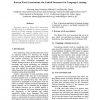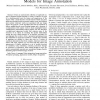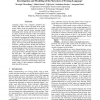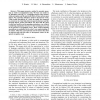18 search results - page 1 / 4 » Korean Word Associations: The Linked Structures for Language... |
ICALT
2009
IEEE
13 years 11 months ago
2009
IEEE
This paper reports on Korean Word Associations (KorWA) which were collected to construct a semantic network for Korean language. An approach of graph representation and network an...
PAMI
2010
13 years 3 months ago
2010
Abstract— Given an unstructured collection of captioned images of cluttered scenes featuring a variety of objects, our goal is to simultaneously learn the names and appearances o...
CPM
1999
Springer
13 years 9 months ago
1999
Springer
We present a very efficient, in terms of space and access speed, data structure for storing huge natural language data sets. The structure is described as LZ (Ziv Lempel) compresse...
IJDAR
2007
13 years 4 months ago
2007
Language usage over computer mediated discourses, like chats, emails and SMS texts, significantly differs from the standard form of the language. An urge towards shorter message l...
ICRA
2009
IEEE
13 years 2 months ago
2009
IEEE
Abstract-- This paper presents a method to associate meanings to words in manipulation tasks. We base our model on an affordance network, i.e., a mapping between robot actions, rob...




